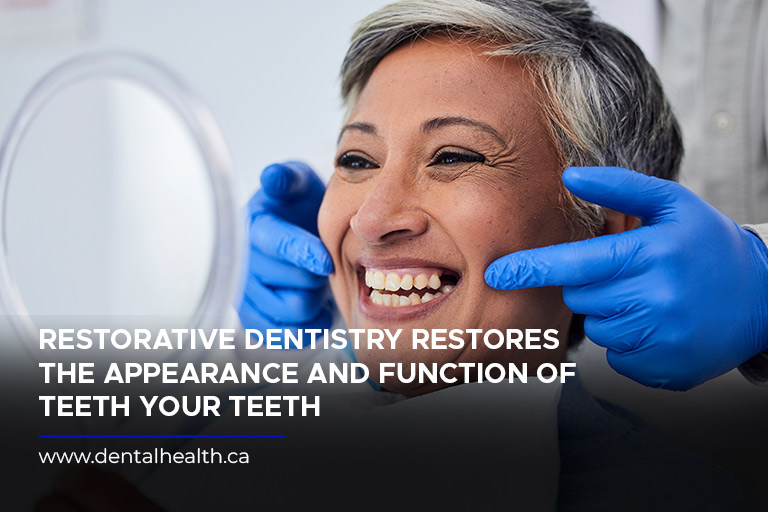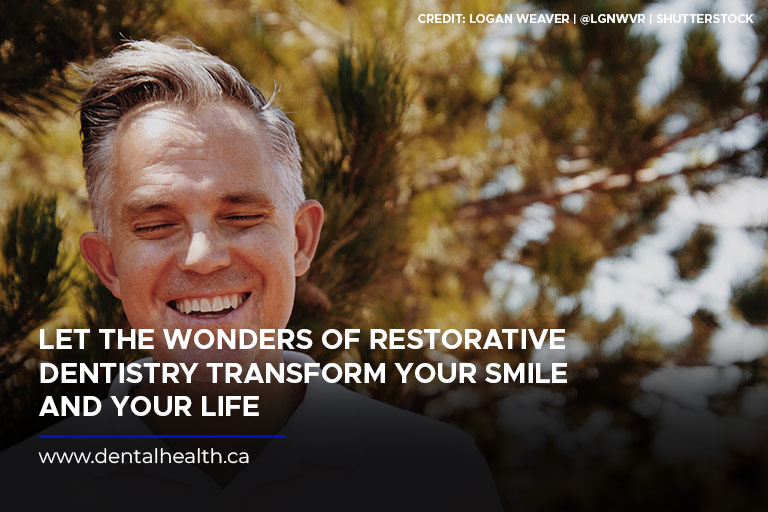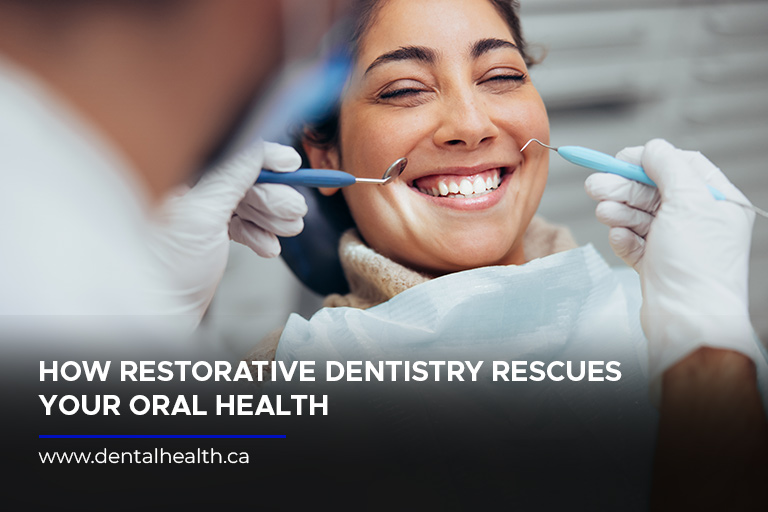A beautiful smile is probably one of the first things that comes to mind when people think of good oral health. However, there is more to healthy teeth and gums than just aesthetics. By taking care of your teeth and gums, you are also taking care of the rest of your body. For that reason, restorative dentistry is of the utmost importance. Let’s talk about how restorative dentistry can save your oral health.
What Is Restorative Dentistry?

Restorative dentistry is a term that some people may not be familiar with. However, even without knowing the name, most people have probably experienced some level of restorative dentistry. This kind of dentistry focuses on diagnosing and managing oral health issues, with the primary goal of restoring the function and appearance of damaged or missing teeth.
This field addresses a wide range of dental problems, including tooth decay, trauma, and congenital disorders. The emphasis is on repairing or replacing damaged teeth to improve both oral health and aesthetics.
Types of Restorative Dentistry Procedures
Fillings
Restorative dentists use dental fillings to repair teeth affected by cavities or minor damage. Common filling materials include amalgam (silver-coloured) and composite resin (tooth-coloured).
Crowns
Also known as caps, crowns are custom-made restorations that cover and protect damaged or weakened teeth. They restore the tooth’s shape, size, strength, and appearance.
Bridges
A dental bridge is used to replace one or more missing teeth. They consist of artificial teeth (pontics) anchored to adjacent natural teeth or dental implants. Bridges help restore proper biting and chewing functions.
Dental Implants
Dental implants are titanium posts surgically placed in the jawbone to serve as artificial tooth roots. They support dental crowns, bridges, or dentures, providing a stable and long-lasting solution for missing teeth.
Dentures
Dentures are removable prosthetic devices used to replace multiple missing teeth. They can be full (replacing all teeth in an arch) or partial (replacing a few missing teeth).
Root Canal
This procedure is performed to save a tooth that has a diseased or infected pulp (the innermost part of the tooth). The damaged pulp is removed, and the tooth is sealed to prevent further infection.
Inlays and Onlays
These are indirect restorations used to repair moderately damaged teeth. Inlays fit within the cusps of a tooth, while onlays extend to one or more cusps.
Veneers
While often associated with cosmetic dentistry, veneers can also be considered a form of restorative dentistry, and they have become especially popular within the last several years. They are thin shells of porcelain or composite resin placed on the front surface of teeth to improve their appearance and address minor imperfections.
The Benefits of Restorative Dentistry for Oral Health

Now that we’ve talked about what restorative dentistry is and what it has to offer, it’s time to talk about some of the good things it can do for your oral health.
Preservation of Natural Teeth
Restorative dentistry focuses on preserving natural teeth whenever possible. Procedures like dental fillings and crowns aim to repair and strengthen damaged teeth, avoiding the need for extraction.
Prevention of Tooth Loss
By treating conditions such as cavities and gum disease promptly, restorative dentistry helps prevent the progression of oral issues that can lead to tooth loss. Preserving natural teeth contributes to better oral function and overall well-being.
Improved Oral Function
Restorative procedures like dental crowns, bridges, and implants restore proper biting and chewing functions. This is crucial for maintaining a balanced diet and preventing issues related to poor nutrition.
Treatment of Tooth Decay
Restorative dentistry addresses tooth decay through techniques like dental fillings and root canal therapy. Removing decayed tissue and restoring the tooth’s structure helps eliminate pain and prevents the spread of infection.
Improved Smile
Restorative dentistry not only focuses on functionality but also improves the aesthetics of the smile. Dental crowns, bridges, and veneers can enhance the appearance of damaged or discoloured teeth, boosting confidence and self-esteem.
Prevention of Further Damage
Restorative procedures prevent further damage to teeth by repairing cracks, fractures, and other structural issues. This proactive approach helps avoid more extensive and costly treatments in the future.
Preservation of Jawbone Health
Dental implants, a common restorative option for tooth replacement, stimulate the jawbone, preventing bone loss. This is crucial for maintaining facial structure and preventing issues like jawbone atrophy.
Treatment of Trauma and Injuries
Restorative dentistry is effective in addressing dental trauma, such as fractures or dislodged teeth resulting from accidents. Prompt treatment can save damaged teeth and restore oral function.
Relief from Dental Pain
Restorative procedures, including root canal therapy, provide relief from dental pain caused by infections or inflammation. Eliminating pain improves the quality of life and promotes overall well-being.
Customized Treatment Plans
Restorative dentistry offers personalized treatment plans tailored to individual needs. Dentists consider the unique circumstances of each patient, ensuring that the chosen interventions are suitable for their specific oral health concerns.
Remember to Prioritize Your Oral Health!
Taking good care of your teeth and comes has lots of benefits, so it’s important that you stay up to date with your regular dental visits. If you’re looking for an experienced dentist in Grimsby, our team at Kingsway Family Dentistry is here to serve you. In addition to restorative dentistry, we offer a variety of services, including cosmetic dentistry and orthodontics. Contact us today to learn more about how you can schedule an appointment.

